11 Common Cleaning Habits That Are Actually Making Your Home Dirtier
Cleaning your home is essential for maintaining a fresh and healthy environment, but certain habits may actually be doing more harm than good. Many of us unknowingly make common mistakes that can spread dirt, bacteria, and grime, leaving our homes less clean than before. From using the wrong cleaning tools to overusing products, these habits can lead to unnecessary mess and frustration.
This post may contain affiliate links, which helps keep this content free. Please read our disclosure for more info.
Using Dirty Cleaning Tools
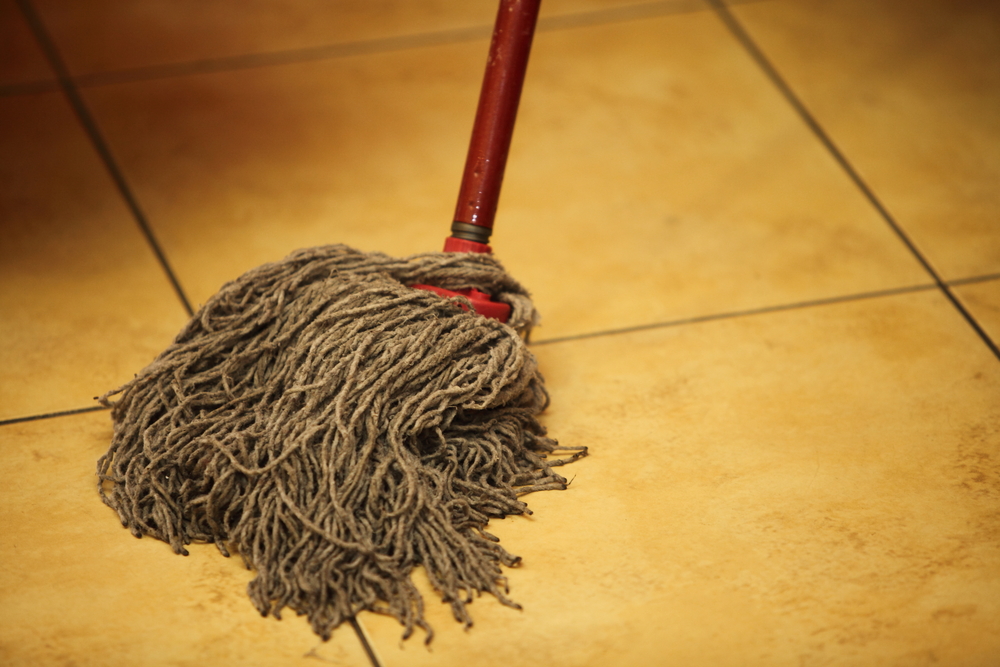
One of the most common cleaning mistakes is using dirty cleaning tools, such as mops, sponges, and cloths. These tools often collect dirt, bacteria, and grime over time, and if they are not properly cleaned, they end up spreading more mess instead of removing it. For example, a mop that hasn’t been washed will just push around the dirt and grime, leaving your floors less clean than before. Similarly, using a dirty sponge to wipe down surfaces can transfer bacteria and particles from one area to another, potentially leading to cross-contamination.
To avoid this, it’s essential to wash your cleaning tools regularly. Sponges should be rinsed after every use, and mops should be cleaned or replaced periodically. You can also consider using disposable cleaning cloths or paper towels to minimize the buildup of dirt. Proper maintenance of cleaning tools ensures they do their job effectively and helps maintain the cleanliness of your home.
Overusing Cleaning Products
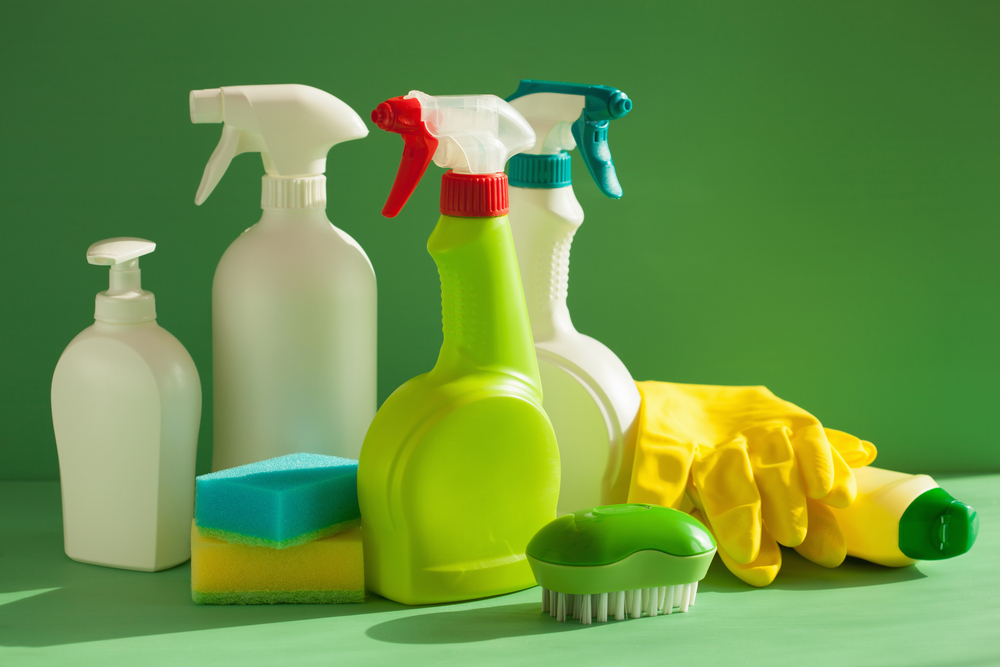
It might seem like using more cleaning products will make your home cleaner, but in reality, overusing cleaning products can create more problems. Many cleaning products leave behind sticky residues when used in excess. These residues can attract dirt, dust, and grime, causing surfaces to get dirty again much faster. For example, using too much floor cleaner or glass spray can leave streaks or a film that makes surfaces appear cloudy or grimy.
It’s important to follow the instructions on cleaning products and use only the recommended amount. Often, a small amount of product is all that’s needed to achieve a clean surface. Instead of overloading your cleaning tools with product, try using just enough to cover the area you’re working on and wipe off any excess. This will prevent sticky buildup and keep surfaces looking fresh.
Not Allowing Cleaning Products Enough Time to Work
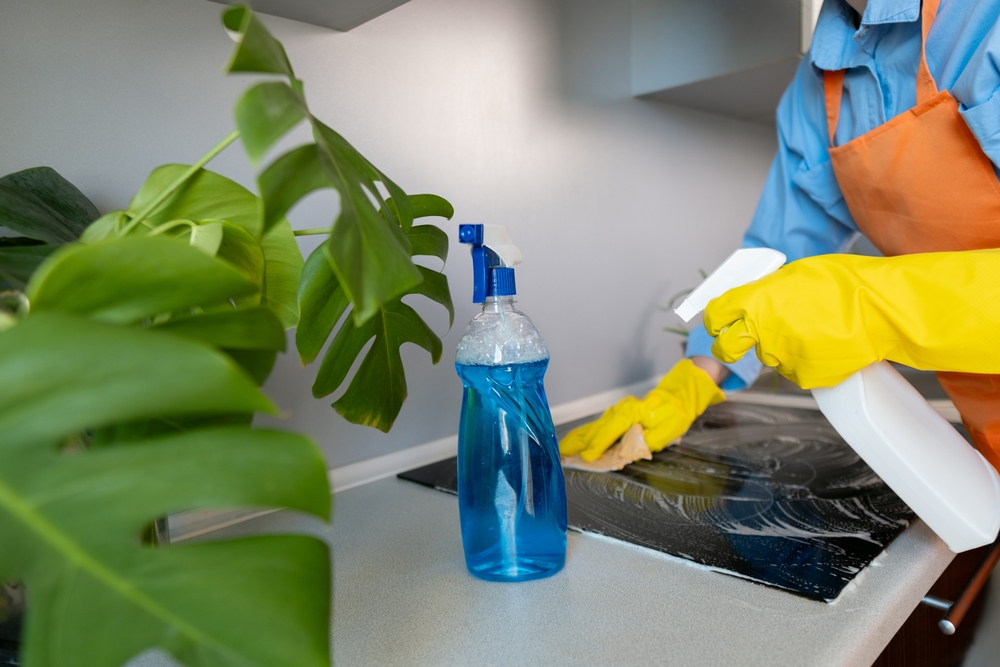
Another common mistake is not giving cleaning products enough time to work. Many people rush through their cleaning routines, expecting instant results. However, most cleaning products require a few minutes to effectively break down dirt, grease, or soap scum. If you don’t allow them enough time to sit, you might end up scrubbing harder and using more product to get the job done, which can lead to frustration and wasted effort.
For best results, spray or apply your cleaning product to the surface and let it sit for a few minutes. This gives the product time to work, breaking down the dirt and grime more effectively. Whether it’s a kitchen degreaser, bathroom cleaner, or general surface cleaner, letting it sit can save you time and elbow grease in the long run.
Cleaning from Bottom to Top
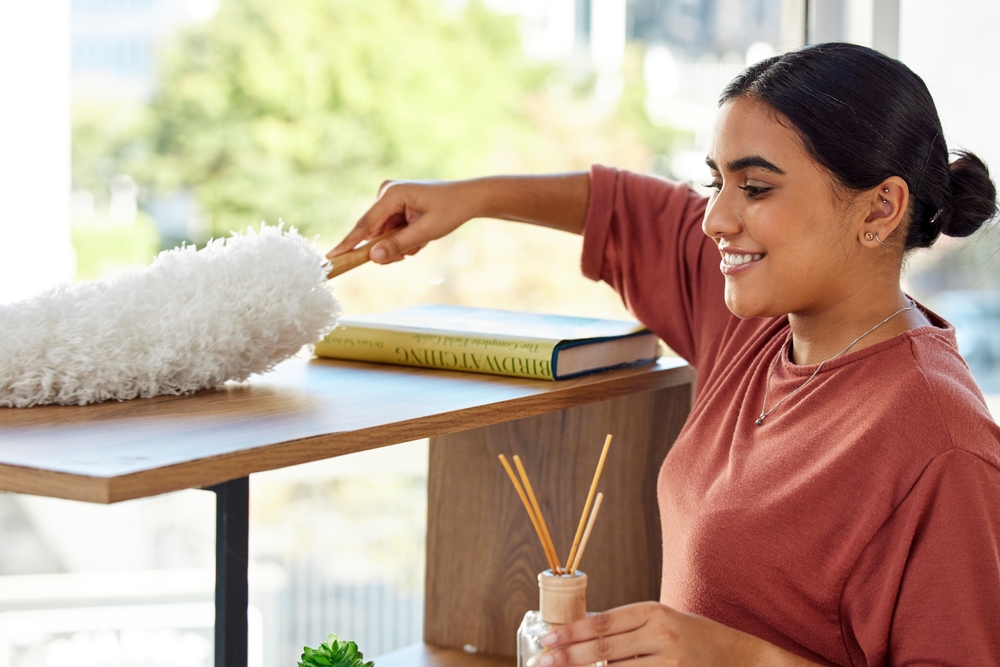
Cleaning from bottom to top may seem logical, but it’s actually an inefficient method. When you start at the bottom, any dust or dirt from higher surfaces, like shelves or countertops, will fall onto the areas you’ve already cleaned. This means you’ll have to clean those areas again, which adds unnecessary time and effort to the cleaning process. For example, wiping down a floor and then cleaning the windows above it will cause any dust or grime from the windows to fall onto the freshly cleaned floor.
To improve efficiency, always clean from top to bottom. Begin with the highest surfaces in the room, such as light fixtures, shelves, and countertops, and work your way down to the floors. This way, any dirt that falls will be cleaned as you go, and you won’t need to redo areas you’ve already cleaned.
Rubbing Stains Instead of Blotting
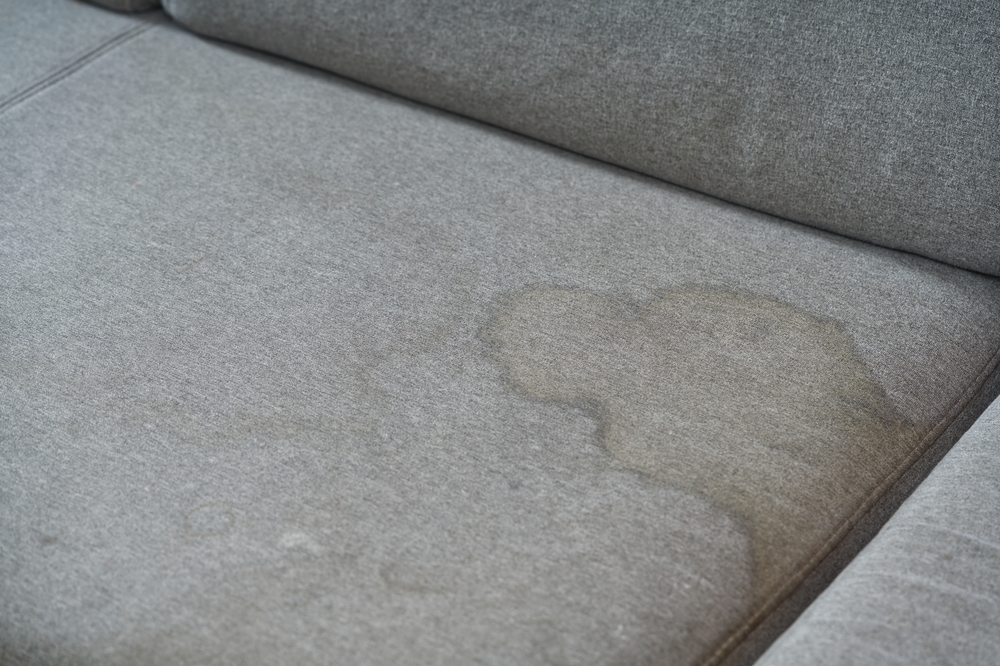
When dealing with stains, many people instinctively rub at them, hoping to lift the dirt. However, rubbing a stain can actually push the stain deeper into the fabric or surface, making it harder to remove. Rubbing also causes fibers in fabrics to fray and can spread the stain, creating a larger mess. Whether it’s a coffee spill on your couch or a food stain on your carpet, rubbing is not the right approach.
The correct method for stain removal is blotting. Gently blot the stain with a clean cloth or paper towel, starting from the outer edges and working your way in. This helps absorb the stain without pushing it further into the material. Blotting is gentler on fabrics and surfaces, and it helps prevent the stain from setting in. Always remember to work slowly and avoid using excessive force.
Using All-Purpose Cleaners on Delicate Surfaces
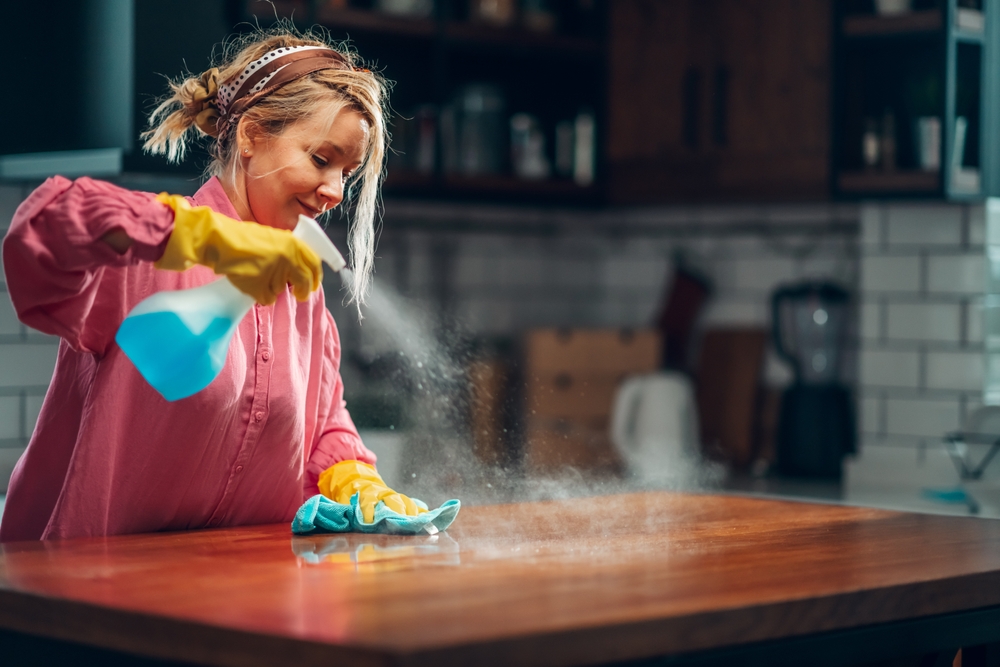
All-purpose cleaners are convenient and easy to use, but they are not suitable for every surface in your home. Many of these cleaners contain harsh chemicals that can damage delicate surfaces such as marble, granite, or natural wood. Using an all-purpose cleaner on these surfaces can leave them looking dull, scratched, or even discolored. Additionally, some of these cleaners can strip protective coatings, making surfaces more susceptible to damage in the future.
Instead, opt for specialized cleaners designed for specific materials. For example, use a stone-safe cleaner for granite countertops and a wood cleaner for wooden furniture. Always read the label to ensure the product is safe for the surface you’re cleaning. This will help preserve the beauty and longevity of your home’s delicate materials.
Not Cleaning Air Vents and Filters Regularly
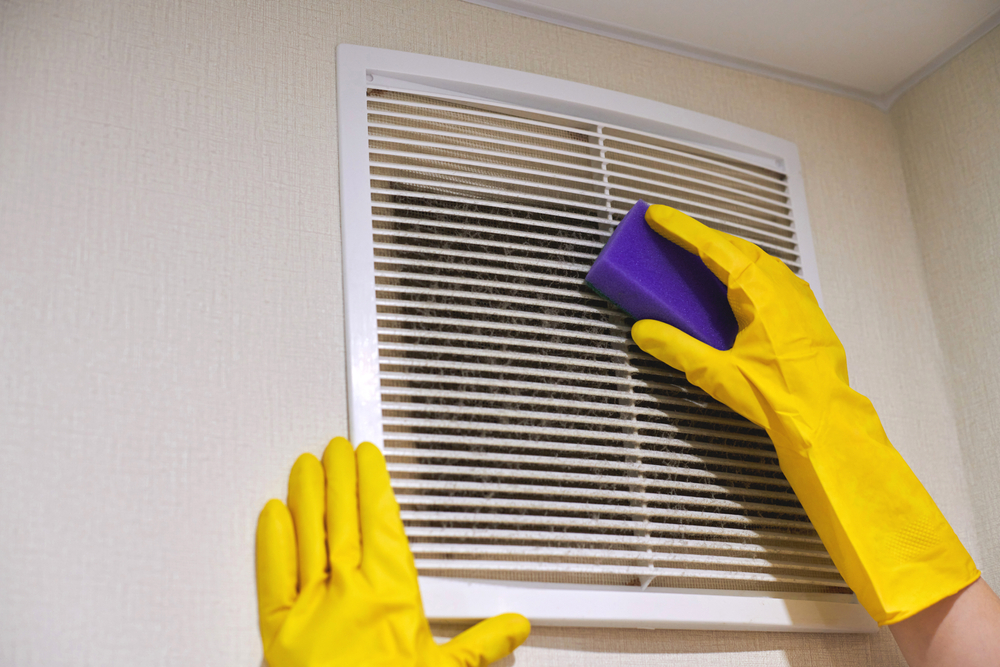
Air vents and filters are often overlooked during regular cleaning routines. However, these areas collect dust, dirt, and allergens, which can circulate throughout your home if not cleaned regularly. Over time, clogged vents can reduce the efficiency of your HVAC system, leading to higher energy bills and poor air quality. In addition, dirty vents can exacerbate respiratory problems or allergies, causing discomfort for those in the home.
To prevent these issues, make sure to clean or replace air filters regularly, typically every 1-3 months depending on usage. Also, use a vacuum or microfiber cloth to remove dust from vents and ducts to keep the air in your home clean and fresh. Regular maintenance of these systems will improve both air quality and energy efficiency.
Overlooking High-Touch Surfaces
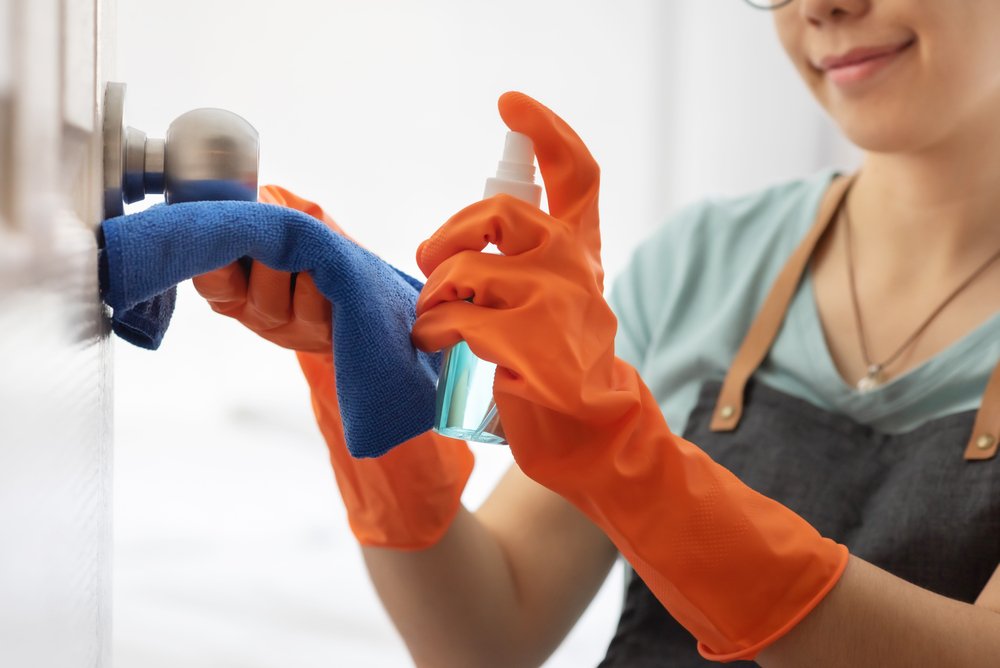
When cleaning your home, it’s easy to focus on visible surfaces, such as floors and counters, but high-touch areas often get neglected. Doorknobs, light switches, remote controls, and even phone screens accumulate germs and bacteria more quickly because they are frequently touched. Failing to clean these areas can lead to the spread of illness and dirt throughout your home. Even though these spots may not always look dirty, they can harbor more germs than you realize.
Make it a habit to disinfect high-touch surfaces regularly with a cleaner that kills germs and bacteria. A quick wipe-down with a disinfectant wipe or spray is all it takes to keep these areas sanitary. This simple step can help reduce the spread of germs and keep your home healthier overall.
Cleaning Windows on a Sunny Day
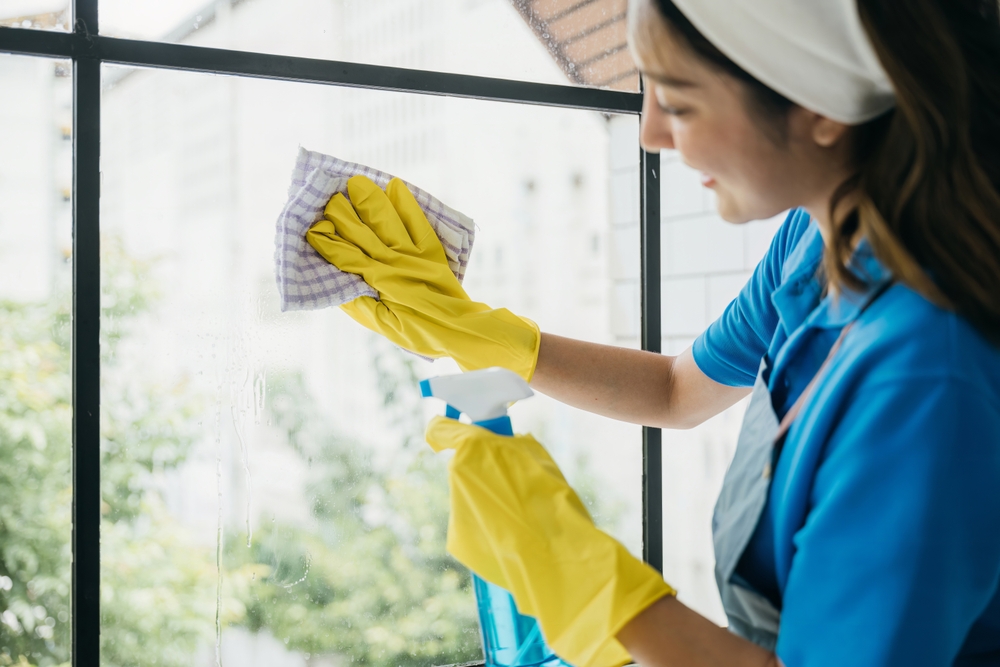
Cleaning windows on a sunny day might seem like a good idea because you get plenty of natural light, but it can actually create streaks and smudges. The heat from the sun causes cleaning products to dry too quickly, leaving behind streaks or a cloudy film. As the cleaner evaporates too fast, it does not have enough time to properly break down dirt and grime.
To avoid streaks, try cleaning windows when the sun is not shining directly on them. Early mornings or cloudy days are ideal for window cleaning because the cleaner has time to work and won’t dry too quickly. Using a microfiber cloth to wipe away the cleaner can also help avoid streaks and give you a clearer finish.
Forgetting to Clean Behind Appliances
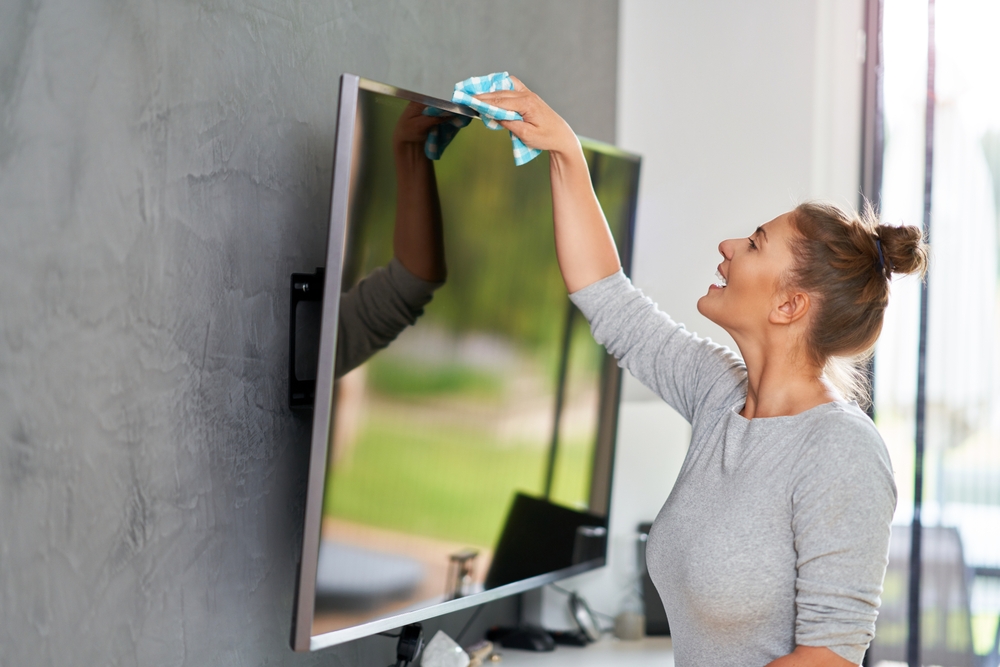
Behind appliances like refrigerators, ovens, and washing machines can accumulate a significant amount of dust, food particles, and grease over time. When these areas are neglected, they can create unpleasant odors, attract pests, and even affect the efficiency of your appliances. Grease and food particles can also contribute to mold growth, especially in kitchens and laundry rooms.
Make it a point to move your appliances occasionally to clean behind them. Vacuum the area to remove dust and debris, and use a damp cloth to wipe down surfaces. This simple task helps to keep your home fresher and your appliances working at their best.
Using the Same Cleaning Cloth for Everything
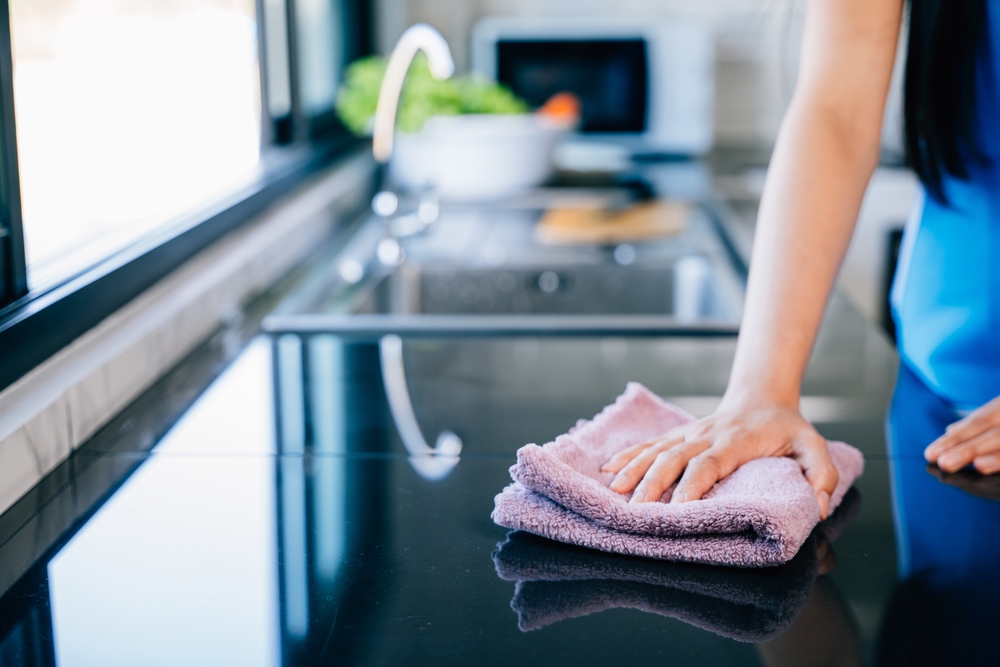
Using one cloth to clean multiple surfaces can spread germs and dirt throughout your home. For instance, using the same cloth to clean countertops, dishes, and bathroom surfaces can transfer bacteria and grime from one area to another, resulting in cross-contamination. Additionally, clothes that are too dirty can spread dirt back onto clean surfaces, making them look worse than before.
To avoid this, designate specific cleaning cloths for different tasks. Use one for the kitchen, another for bathrooms, and a separate one for dusting. Regularly launder your cleaning cloths to prevent the buildup of dirt and bacteria, ensuring they stay effective and hygienic.
This article originally appeared on Avocadu.
